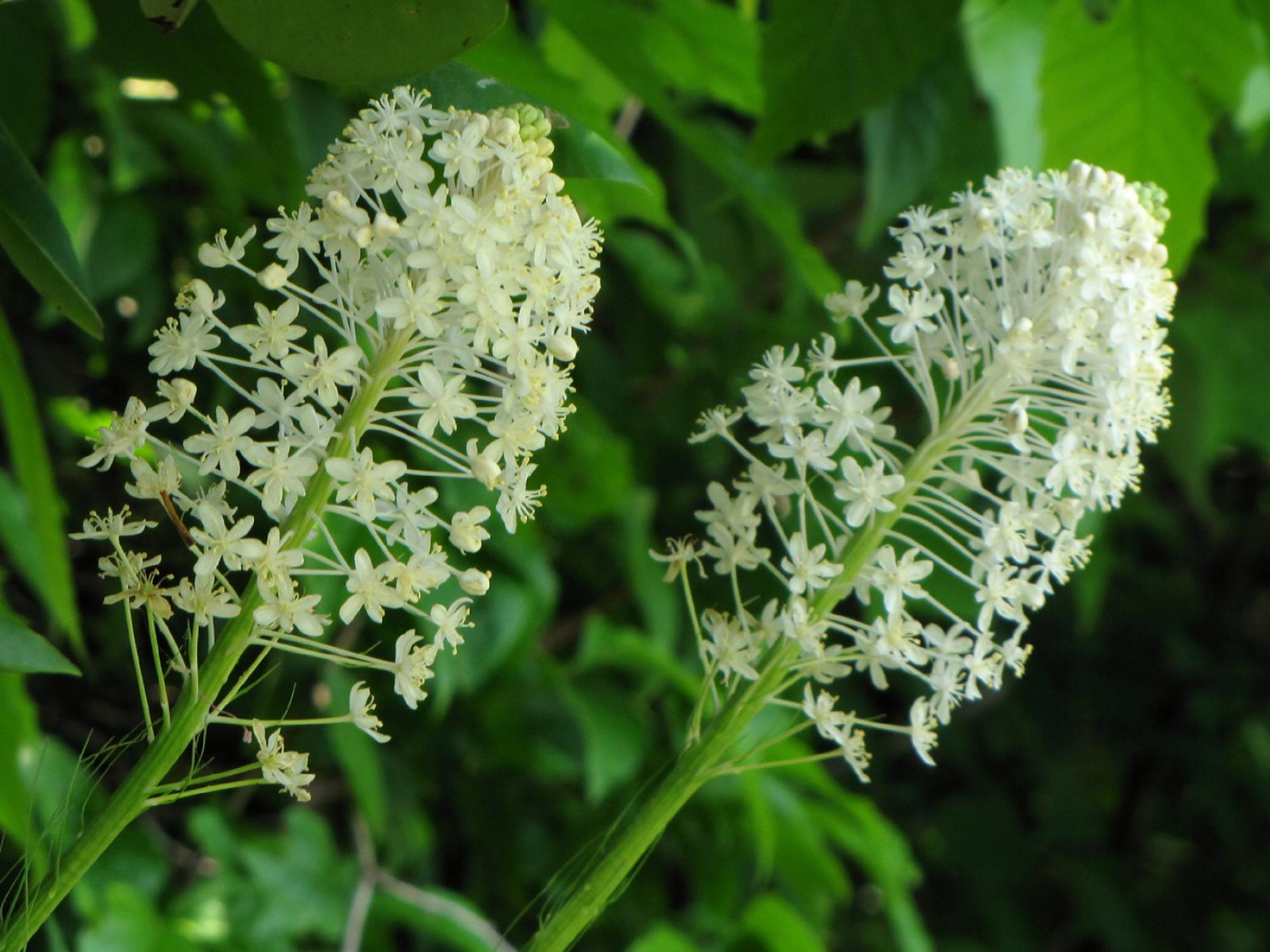Xerophyllum
|
Family: Melanthiaceae |
Herbs, perennial, from stout, tuberous, woody rhizomes ending in weakly developed, tunicate bulbs; offshoots not flowering for several years, then dying after fruiting; roots cordlike, thick. Stems erect, simple, robust. Leaves persistent, mostly basal, spiral, arching, dilated proximally, reduced distally; blade filiform-linear, keeled, rigid, margins serrulate, apex wiry pointed, densely tufted. Inflorescences at first corymbose, becoming elongate, terminal-racemose, densely flowered, bracteate. Flowers erect or spreading, semirotate; perianth hypogynous; tepals persistent, 6, spreading, distinct, creamy white, 5-7-veined, oblong or obovate, equal to subequal, claws absent, tepal nectaries absent; stamens 6, weakly epitepalous, divergent, distinct, 3-4 mm; filaments distinct, subulate, dilated proximally; anthers dorsifixed, versatile, 2-locular (not confluent), extrorse; gynoecium weakly syncarpous; ovary superior, 3-locular; septal nectaries absent; styles persistent, 3, recurved, distinct; stigmas papillate along adaxial apex; pedicel spreading or erect, 3-5 cm. Fruits capsular, 3-lobed, globular to ovoid, dehiscence loculicidal. Seeds 2-4 per locule, greenish brown, wingless, oblong-fusiform, 3-angled, 3-4 mm, glossy. x = 15. Xerophyllum, an endemic genus with one species in eastern and one in western North America, is distinct from other melanthoid genera with which it has long been associated (J. D. Ambrose 1975, 1980; P. Goldblatt 1995; C. Sterling 1980; M. Takahashi and S. Kawano 1989; F. H. Utech 1978c) and has recently been segregated in the tribe Xerophylleae S. Watson within the Melanthiaceae sensu stricto (M. N. Tamura 1998; W. B. Zomlefer 1997b), or in the monotypic family Xerophyllaceae (A. L. Takhtajan 1994, 1997). Xerophyllum tenax and X. asphodeloides are both cultivated for their showy, white racemes. Any given offshoot plant may not flower for several years, but ultimately an unbranched, strongly bracteate, flowering stalk is produced which, along with the surrounding leaves, dies after fruiting.
Fls perfect; tep 6, spreading, oblong-elliptic, glandless and clawless, withering persistent around the fr; stamens 6, with long filaments and short, basifixed, latrorse anthers; ovary superior, with 3 distinct, elongate, slender, persistent styles stigmatic down the inner side; capsule loculicidal, 3-lobed, with 2(3) oblong, unappendaged seeds per locule; perennial herbs from a stout, caudex-like rhizome, producing a dense cluster of long, slender, persistent, firm and sharp-tipped lvs, a tall stem beset with similar but smaller lvs, and a dense terminal white raceme. 2, the other in w. N. Amer. Gleason, Henry A. & Cronquist, Arthur J. 1991. Manual of vascular plants of northeastern United States and adjacent Canada. lxxv + 910 pp. ©The New York Botanical Garden. All rights reserved. Used by permission. |

